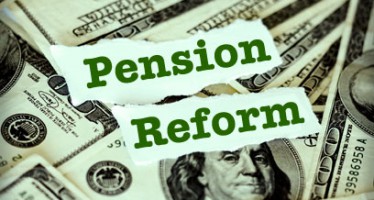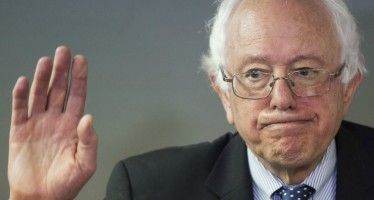Prop. 33 promotes auto insurance discount
By Dave Roberts
Proposition 33 is either a common sense way to increase competition in the auto insurance market, thus lowering rates for many drivers, or a ploy to raise rates on those who can least afford to pay. Those were the main arguments in the Prop. 33 debate at last month’s hearing of the joint Assembly/Senate Insurance Committee.
There’s potentially a lot of money at stake if Prop. 33 passes. California had a $21 billion auto insurance market in 2011, accounting for 40 percent of all premiums collected by insurers in the state, according to legislative analyst Jeremy Fraysse. Insurance companies paid about $500 million of that into the state General Fund for the privilege of selling insurance in California.
Since 1988, insurance companies have been regulated by Proposition 103, which requires the state insurance commissioner to review and approve rate changes. Three main factors are considered in rate-setting: the driver’s safety record, the number of miles driven each year and the number of years the person has been driving. There are also 16 other optional rate-setting factors that companies may consider, one of which is a discount for motorists who remain with a company for an extended period of time.
Prop. 33 essentially does one thing: it allows drivers to switch from one insurance company to another and retain their continuous coverage discount with the new company. Currently the discount expires when the driver leaves his insurance company.
The measure also allows the discount to apply to certain motorists who have allowed their insurance to lapse based on the following criteria:
* Anyone whose insurance lapse was not more than 90 days in the previous five years for any reason.
* A lapse of not more than 18 months in the previous five years for those who are employed due to a layoff or furlough.
* Any lapse, regardless of how long, for those in active military service.
The continuous insurance discount could also be provided on a proportional basis based on the number of years in the previous five years that the driver was insured. For example, if a motorist had coverage for three of the past five years he could receive 60 percent of the continuous coverage discount.
The proponents say that Prop. 33 will be a boon to the average motorist looking to save on car insurance.
Discounts
“Consumers love discounts,” said Michael D’Arelli, executive director of the American Agents Alliance. “As an independent agent, I love to be able to pit carriers against each other to drive prices down. Under current law, companies cannot give you a discount for having prior insurance with another company. We think that’s wrong. We think consumers should be rewarded for following the law [requiring auto insurance]. And if they follow the law, they should be offered a discount. Companies should be able to lure you from your current company by offering you something better. We believe in that competition.
“Current law punishes the military. If you lapse your policy for a single day for any reason, you lose the discount. How does that help consumers? We also reached out to children living at home with their parents. Fifty percent of kids graduating from college can’t get work. What happens? They move home with mom and dad. They are probably still on their [family] policy in the first place. When they do leave the nest and get their own policy, under current law they don’t qualify for a persistency discount at all. Our initiative allows them to capture the same discount that the parents are entitled to, giving them a fresh start when they get out on their own.”
Helping the poor
Although opponents criticize Prop. 33 for hurting the poor, D’Arelli argued that many of the poor actually will be helped by the measure. Eighty-five percent of California drivers have auto insurance. About half of the remaining 15 percent have insurance for a while, then let it lapse, he said.
“As an insurance agent, I had a lot of customers who were very low income, and they would come in and pay cash every month dutifully. And often times these customers are making hard choices: Do I pay my auto insurance premium or do I feed my family? It’s understandable that they come in and out of coverage. Those people will be given a proportional discount. We thought we needed to create an inducement for people who have lost their insurance to come back in the marketplace. If they had insurance two of the last five years, they’ll get two-fifths of a discount. Today they get zero. They have no incentive, other than to comply with the law, to get insurance. We wanted to create an incentive for people who are currently uninsured to get service credits for the insurance that they actually did have in the last five years. That’s a marked improvement over current law.”
But the opponents aren’t swayed by that argument. They consider it a smoke screen for what they believe Prop. 33 actually does: remove the ban on insurers from charging higher rates to drivers who have not had insurance coverage.
“This was a specific provision that was a central anti-discrimination provision of Prop. 103,” said Carmen Balber, representing Consumer Watchdog. “Because insurance companies were using that factor alone to deny coverage for drivers or to price them out of the market. What isn’t justified, and what proponents haven’t been able to show, is that there is in fact any sort of reduced risk for drivers simply because of a history of prior insurance coverage.”
Playing the race card
Richard Marcantonio, representing Public Advocates, implied that Prop. 33 is racist.
“The provision in Prop. 103 that Prop. 33 seeks to overturn was put in place to end rampant redlining in many low-income communities of color back in the 1980s,” he said. “And weakening that provision will definitely bring that discrimination back. There are estimated to be 3.5 to 4 million uninsured California drivers. About 50 percent of them live in just two percent of the state’s zip codes, according to a report by the California Department of Insurance. Those are characterized by very low median incomes and by minority populations of 65 percent or greater. So any burden on uninsured drivers as a group is going to fall disproportionately on the lowest income drivers of color.
“Proposition 103 [mandates that] you can’t exclude drivers just because they have previously been uninsured, and you can’t charge them more for that reason. That protection will be lost if Prop. 33 passes. And that is why this is an issue of such great importance to many civil rights groups that remember that history.”
Marcantonio also argued that insurance companies will have to raise rates on the uninsured because they will need to recoup the lost revenue from the discounts they are expanding to continuously insured motorists.
“By expanding the pool of those eligible for the discount, the impact on those two percent of California communities who have long been plagued by this redlining practice is going to be even worse that it would under Prop. 17.”
Prop. 17 was a precursor to Prop. 33, which did not expand the discounts as widely as Prop. 33 and which was rejected by voters.
But Steve Lehmann, an actuarial consultant for the Yes on Prop. 33 campaign, refuted the allegation that insurance companies would have to raise rates on previously uninsured drivers. He said that an insurance company’s lost revenue from expanding discounts for those with prior coverage would be offset by the reduced risk of loss that those motorists provide.
“This company has to go to the California Department of Insurance and file statistics to justify that those people who have a long history of continuous coverage have lower losses and present a lower risk to the insurance company,” he said. “They will have a decrease in their premiums, but they will also have a decrease in their losses to charge those rates.”
That resonated with committee member Sen. Ted Gaines, R-Roseville, who argued that Prop. 33 will actually be fairer to motorists who play by the rules and obtain insurance.
“I think what’s happened as the result of Prop. 103 is that the cost shift has gone to the 85 percent who are insured in order to reduce the rate to the 15 percent who are not,” he said. “Even if the statistical risk is higher for the 15 percent who are not [insured]. If you’ve got a good driving record and are developing a discount that can be proven actuarially as a result of keeping your coverage in effect for periods of time, why shouldn’t you have that ability to shop the market and get the most competitive rate amongst your competition?”
An Oct. 11 California Business Roundtable poll shows Prop. 33 winning handily 54-34 percent with 12 percent unsure.
Related Articles
Bill would strengthen public's right to comment before votes
“The people of this State do not yield their sovereignty to the agencies which serve them,” says California Code Section
Backdrop to CalPERS’ many debacles: Agency thinks it’s great
The giant California Public Employees’ Retirement System, as one might suspect from its massive and self-important Sacramento headquarters, thinks it
Young CA voters cooling on Democratic Party
With their presidential primary season defined by a massive generation gap, California Democrats have braced for their state to play





